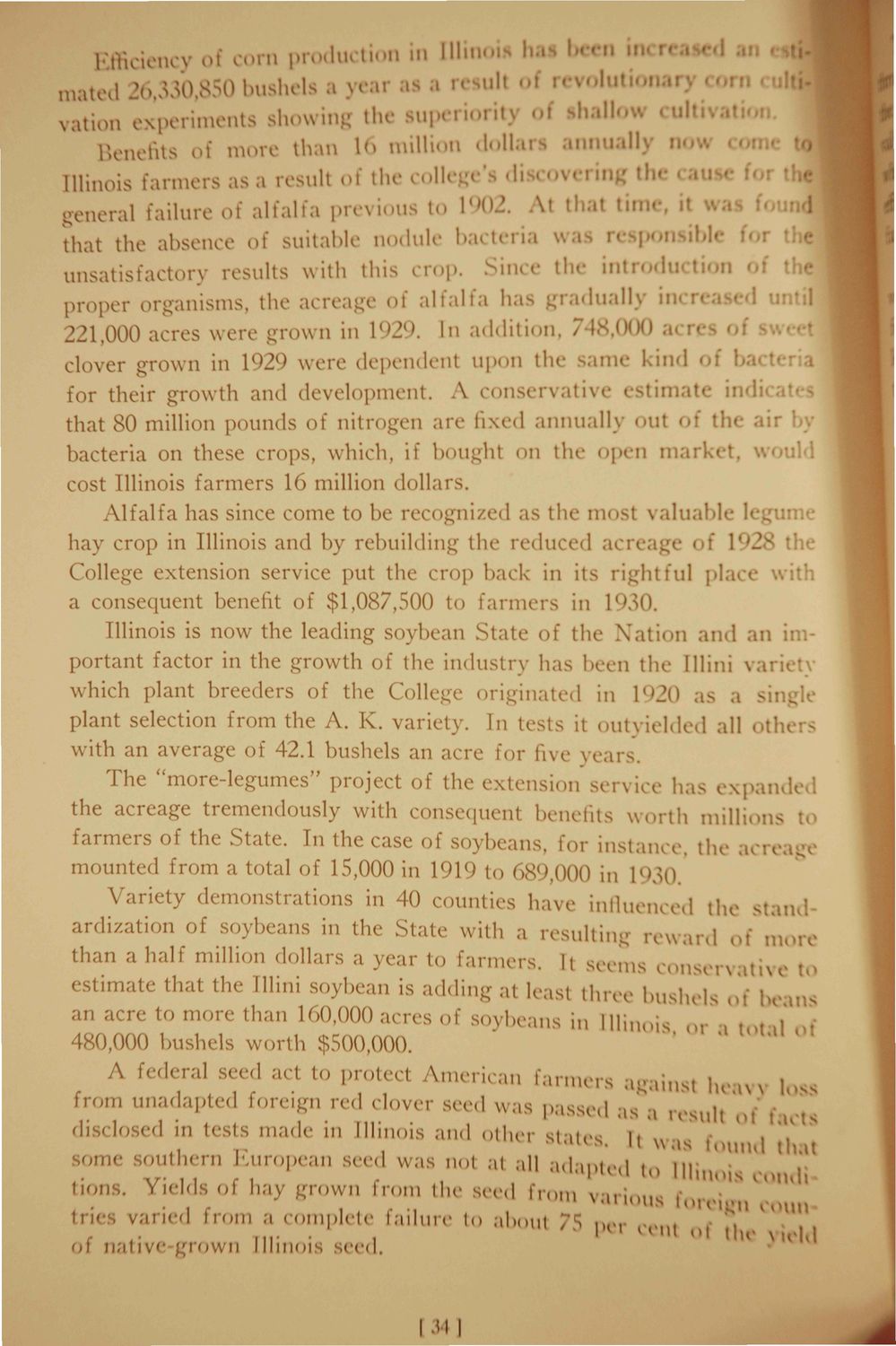Caption: Booklet - One Hundred Million (Impact of UI) (1931)
This is a reduced-resolution page image for fast online browsing.

EXTRACTED TEXT FROM PAGE:
Efficiency of rn production in Illin \\ l,r 0,850 bushels a i uH ' mated vatiou experiments showii thi u| ri it lhall Benefits of more than 16 million dollars m Illinois tanners as a result of the »< U W COV( i tin rea* i • b! I th i r the general failure of alfal i previ I 190 ' Ki tl t1 tun- that the absence of suitable u. lule bactei I \ unsatisfactory results with tins crop, Since ti i in luetic i of the proper organisms, the acreage of alfalf; has tduall in I ui 1 221,000 acres were grown in 1929, In addition, 7A oon clover grown in 1929 were dependent upon the ime kind i i for their growth and development. A conservative i >timatC ind that 80 million pounds of nitrogen are fixed annual!; OUl tin air bacteria on these crops, which, if bought on the open market. uld cost Illinois farmers 16 million dollars. Alfalfa has since come to be recognized a the m t valuable lej < hay crop in Illinois and by rebuilding the reduced e of 1928 tin College extension service put the crop back in its rightful pi; ith {) a consequent benefit of $1,087,500 to farmers in \ M). Illinois is now the leading soybean State of the Nation and an important factor in the growth of the industry has 1 en the lllini variel which plant breeders of the College originated in 1920 as a Singh plant selection from the A. K. variety. In tests it outyield* 1 all oil rs with an average of 42.1 bushels an acre for five yeai The "more-legumes" project of the extension servi h 3 e* the acreage tremendously with consequent benefits \\ th mill farmers of the State. In (lie case of soybeans, for instance, the mounted from a total of 15,000 in 1919 to 689,000 ;„ 1931, Variety demonstrations in 40 counties have influenced the - ided uA- ardization of soybeans in the State with a resulting rev than a half million dollars a year to farmers. It seems con d of m • v ttlV< est,mate that the lllini soybean is adding at least three bushels be is an acre 10 more than 160,000 acres of soybeans in Illinois d 480,000 bushels worth $500,000. A federal seed act to protect American farmers against heavi 1 * from unadapted foreign red clover seed was passed as a result of fa disclosed in tests made in Illinois and other State* h „ 1 7 som< onthern European seed was not at all adapted to III, tions. Yields of hay grown from the seed from various for* n , >un tries varied from a complete failure to about 75 pei ,,, ,,, ,1 1 t nativ grown Illinois seed. 1 ;M 1
|